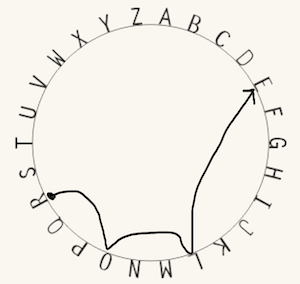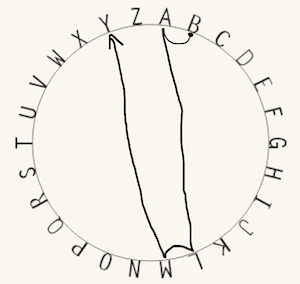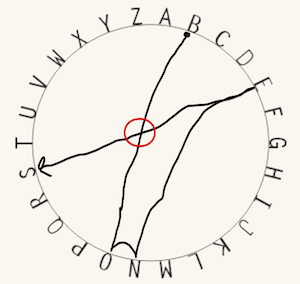43
1
A "simple circular" word is a word whose chords do not intersect. The chords of a word may be seen by laying out the alphabet in a circle, and then connecting the word's consecutive letters.
Examples of Simple Circular Words
ROLE
LAKE
BALMY
Failing Example
A word fails to be simple circular if any of its chords intersect:
The Challenge
Write a program or function that takes a word and returns true if it's simple circular, false otherwise.
- Code golf, fewest bytes wins.
- Standard rules.
- You may assume there are no repeated letters in the word.
- You may assume every word has at least 2 letters
- You may assume the word is all uppercase, or all lowercase, whichever you prefer.
- You may output any two consistent values for true and false.
Test Cases
True
ROLE, LAKE, BALMY, AEBDC, ABZCYDXE, AZL, ZA
False
BONES, ACDB, ALBZ, EGDF




9After around 1 hour of struggling, I've concluded that this cannot be done visually in Scratch. – Lyxal – 2020-01-27T07:41:09.000
4@AZTECCO "You may assume there are no repeated letters in the word." – Kevin Cruijssen – 2020-01-27T08:25:04.250
1@Kevin Cruijssen ah yes, sorry I skipped that. Although this rule makes the challenge simple it's common for words to have repeated letters, plus
ngnanswer seems to work for repeated letters too. Maybe we can have a 2nd challenge later based on this.. – AZTECCO – 2020-01-27T09:41:21.4173@AZTECCO I'll be posting a more difficult sequel to this question later this week. Re: repeated letters specifically, I wanted to avoid dealing with doubles like
GOON, where the only sensible interpretation is to add a pre-processing step that removes them, which felt uninteresting to me. I'll grant it might have been better to prohibit only contiguous repeats, rather than repeats altogether. – Jonah – 2020-01-27T13:14:18.263